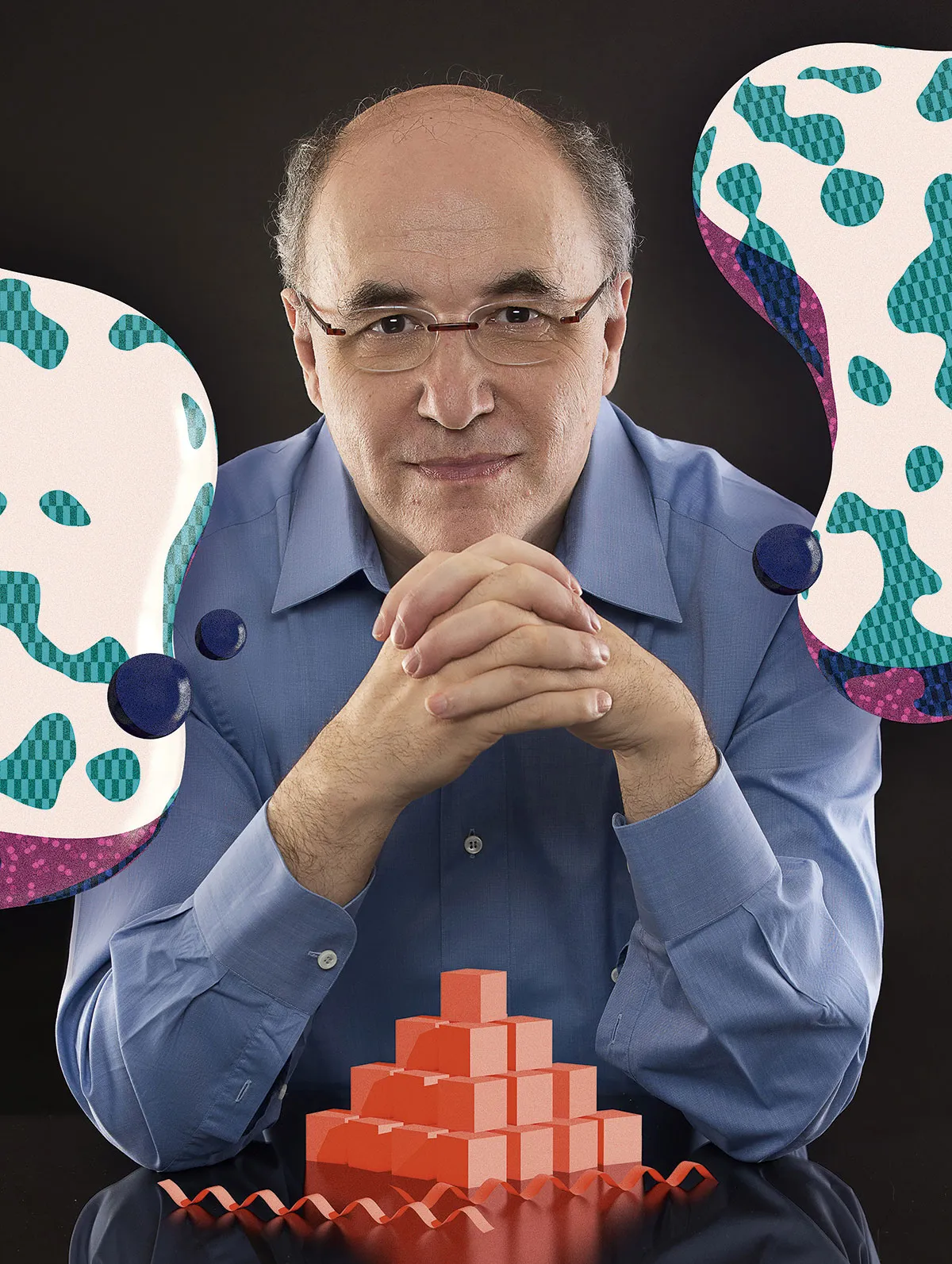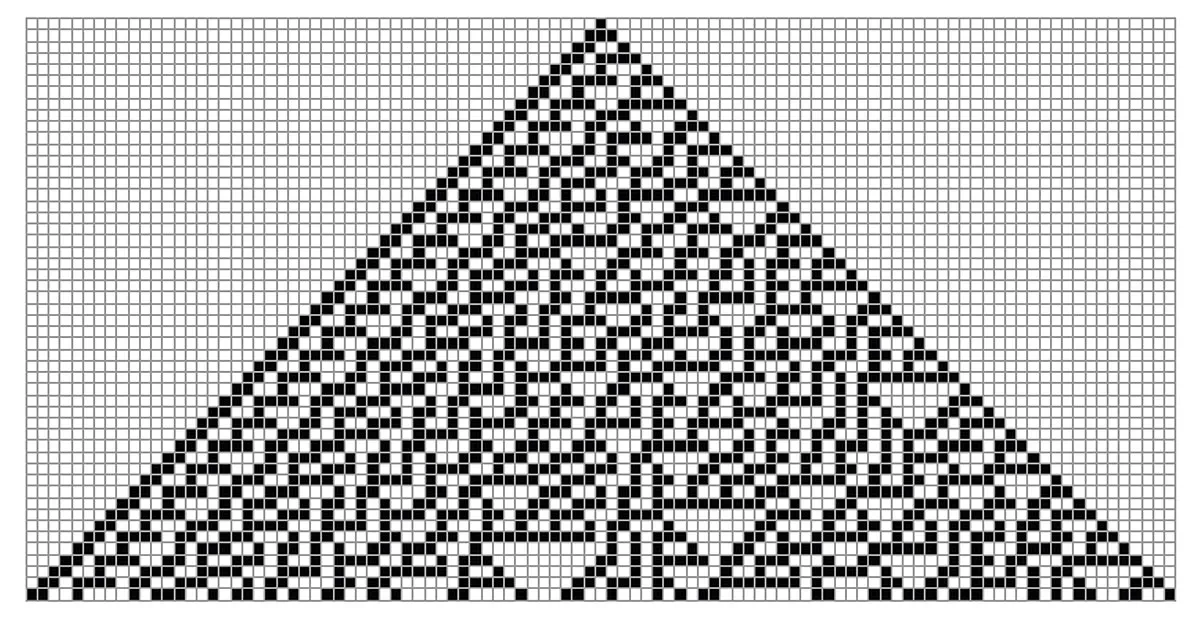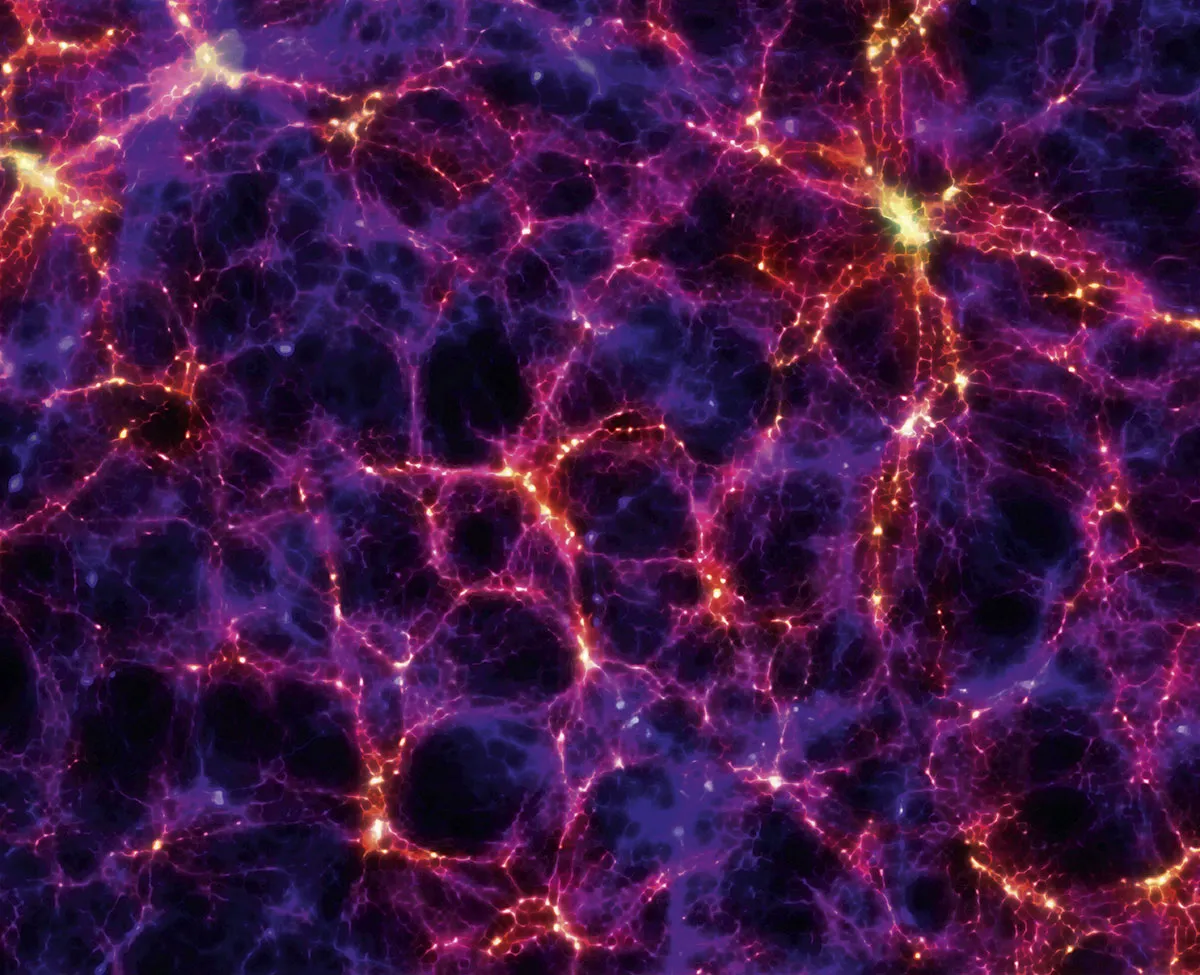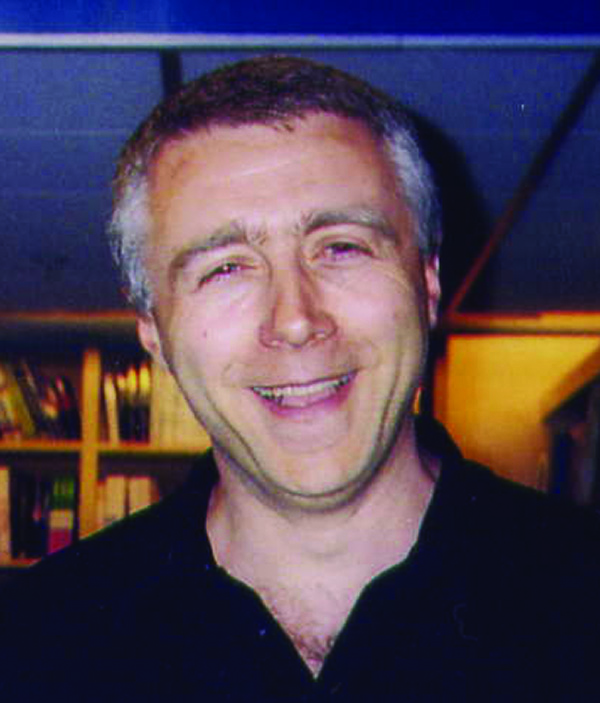Back in the plague year of 1665-1666, Isaac Newton changed the scientific world, discovering the universal law of gravity and the mathematics of calculus. Now, in the plague year of 2020-2021, is history about to repeat itself?
Stephen Wolfram thinks so. The British-born scientist, who lives in the US, claims he has found a route to a fundamental theory of physics that answers some of the biggest questions, such as what is space? What is time? And why does the Universe exist?
“To be fair, a lot of the work was done in 2019 and we were about to start speaking about it in March 2020, but everything locked down for COVID,” says Wolfram. “But it is true to say that we have made more progress towards finding a fundamental theory of physics than I dared believe was possible.”
Wolfram’s starting point was to ask: What is space? “Physicists don’t often ask this question,” he says. “They merely think of space as the backdrop against which the events of the Universe play out.”
According to Wolfram, space is made of a network of ‘nodes’, which are connected to each other. The nature of the connections – how each node is linked to nearby and faraway nodes – can create a space of any dimension. So if the number of nodes increases as the square of the distance from any given node – like the surface area of a sphere – the network has the properties of familiar 3D space.
Read more theories of the Universe:
- What if the Big Bang was not the beginning?
- Ghost stars: The radical theory that could solve the mystery of dark matter
“I actually believe the Universe started out with infinitely many dimensions and gradually cooled down to the three we have today,” says Wolfram. “But I don’t yet know why there are precisely three.”
Wolfram is interested in what is the minimal ‘stuff’ needed to create the Universe. And in addition to the network of nodes – ‘the atoms of space’ – there is another ingredient, the ‘rules’ that change the network. So, for instance, a rule will say: ‘wherever there is a particular pattern of nodes, replace it with another particular pattern of nodes’.
“It is the application of such rules, over and over again – the continual updating of the space network – that knits together space,” says Wolfram. “The miracle is that this process can also create all the matter in the Universe and all laws of physics we have discovered over the past 350 years.”

Before examining this remarkable claim, it is worth considering how Wolfram got to this point. Born in London in 1959, he was publishing physics papers at the age of 15. As a graduate student at the California Institute of Technology in Pasadena, he worked with Richard Feynman, arguably the most notable post-war US physicist. But a crucial event for Wolfram was a discovery he made in 1981 when he used a computer to investigate the consequences of simple computer programs – ones whose output is repeatedly fed back in as their input, like a snake eating its own tail.
The simplest computer programs he could think of at the time were cellular automata. These are one-dimensional lines of squares, each of which can be empty or filled. A rule is applied that replaces a certain pattern of squares with another. In this way, a new line of squares is created. And another new line. And so on.
Most of the time Wolfram found that nothing interesting happened. In some cases, however, there were persistent features that moved across the evolving cellular grid, reminiscent of subatomic particles in the real world. But the big surprise was that there were a few rules that created never-ending novelty and complexity.
This was a light bulb moment for Wolfram. Usually, simple programs have simple outputs and complex programs have complex outputs. But Wolfram had discovered simple programs with complex outputs. His immediate thought was, “Is this how the Universe creates a rose or a newborn baby or a galaxy? Is it merely applying a simple program over and over again?”
In 2002, Wolfram published A New Kind Of Science, a 1,200-page tome with 1,000 black-and-white pictures and half a million words. In it, among other things, he explored the consequences of all 256 possible rules for one-dimensional cellular automata, among which was Rule 30, which generated unlimited complexity. The book was met with hostility from the physics community. Partly, it was because he had published it himself without going through the usual peer review process. But another reason was that other physicists could not see how to use his ideas to predict anything useful.
They had a point. Basically, Wolfram was saying that most of what the Universe is doing is ‘computationally irreducible’ – that is, the outcome can be discovered only by running the computer program for the 13.82 billion years the Universe has been in existence. To many other physicists that was a fat lot of good.
But Wolfram was also saying that, within the Universe-generating computation, there are ‘computationally reducible’ islands, where it is possible to deduce the outcome without actually running the program. “These shortcuts are none other than the laws of physics we have discovered,” says Wolfram.
In the end, Wolfram did not pursue the ideas he had laid out in A New Kind Of Science. On the one hand, he says, there was no demand from physicists. And on the other hand, there was demand for his software such as the computer language Mathematica and the intelligent search engine WolframAlpha, which had made him a billionaire. He therefore spent the next two decades developing them instead.
But in 2019, he met some young physicists who encouraged him to continue his search for a fundamental, computational theory of physics. And, at the age of 60, it was now or never.

The problem with cellular automata is that they run on a pre-existing grid. Wolfram realised quickly that he needed something simpler, even more basic. This is how he hit on the idea of a self-updating space network. There are persistent features in the networks, rather like vortices in water, and these are matter. Ultimately, then, everything arises from space. There is nothing else. Actually, that is not entirely true. There is one other thing. “Time, which everyone since Einstein has thought is the same as space, isn’t,” says Wolfram. “Time is actually the process of step-by-step computation.”
One of the problems with Wolfram’s earlier approach was that, if he found the program that is generating the Universe – and he believed it might be no longer than four lines of code in his own computer language, Mathematica – the question would then arise, why this program and not another? Wolfram therefore hit on the idea that the Universe is being generated by all possible programs running simultaneously.
“At first sight it seems unbelievably messy. How can anything useful come out of this?” he says. “But the miracle is that everything does, including the twin pillars of modern physics: Einstein’s theory of gravity [General Relativity] and quantum theory.”
The key thing is to realise that we are not observing the Universe from outside. That is impossible. Instead, we are pieces of self-updating space network within the overall self-updating space network of the Universe. Not only are we limited in the amount of computation we can do and so unable to perceive most of the irreducible computation going on all around us but we are also limited by our biology, which causes us to impose a single thread of time on what we see. “Despite the fact that all possible rules are actually operating, our sampling will reveal a single rule generating the Universe,” says Wolfram.
Read more about cosmology:
- The six numbers that define the entire Universe
- The cracks in cosmology: Why our Universe doesn't add up
Crucially, our fundamental limitations do not permit us to see the atoms of space. Instead, we see them linked together to make a smooth continuum – a continuum, furthermore, that is described by General Relativity. In Einstein’s theory, masses like planets follow the shortest path, or ‘geodesic’, through space-time. Space-time is in turn warped by the presence of energy (strictly speaking, energy-momentum). According to Wolfram, energy in his picture is nothing more than the amount of activity going on at any location in the network, and it is this computation that ultimately bends the geodesics of massive bodies.
Quantum theory, in contrast, describes the microscopic realm of atoms and their constituents, and is notorious for appearing fundamentally incompatible with General Relativity. Specifically, there is no such thing as a unique path through space. Atoms can follow multiple paths, each with an associated probability. According to Wolfram, this multiple history is built into his framework because, each time a piece of space network is updated, it can be updated by not just one rule but multiple possible rules, leading to multiple histories. “Quantum theory is not a bolt-on, as in standard physics,” he says.
Wolfram goes further. He imagines a ‘branchial space’ that encapsulates all these multiple histories. And this requires the tools of Mathematica to visualise, which is one reason why other physicists, not just mere mortals, find it hard to follow Wolfram. However, the key thing Wolfram claims is that General Relativity, with its geodesics bent by energy-momentum in normal space, is exactly the same as quantum theory with its geodesics bent by energy-momentum in branchial space. “General Relativity and quantum theory are basically the same theory!” he says. “I never expected to discover such a lovely result.”
This is indeed an astonishing result. In mainstream physics, only string theory provides a framework that unites General Relativity and quantum theory, and it has big problems, not least the fact that it leads not to a single Universe but to a multiverse of about 10,500 universes. There is a strong hint, however, known as the ‘holographic principle’, that quantum theory and General Relativity are intimately connected and that quantum theory manifests itself as General Relativity in a higher dimensional space. Wolfram sees his work as confirming this connection.
Carlo Rovelli at Aix-Marseilles University works on ‘loop quantum gravity’, a rival of string theory, which attempts to show that space-time, down at the impossibly small Planck scale, is made of finite loops woven together into a complex shifting network. Is there any connection between Wolfram’s work and loop quantum gravity? “Indeed, I have been curious about the same question!” says Rovelli.
Others find Wolfram’s work fascinating. One is Gregory Chaitin, the Argentinian-American who invented a field of mathematics – algorithmic information theory – when he was 15. “I personally think his new work is very interesting,” he says. “And, yes, something like General Relativity and like quantum mechanics emerges rather naturally.”
Chaitin likes the originality of Wolfram’s approach. “What is fun is that this is completely orthogonal [distinct] to what everyone else is doing. Up to now, string theory has been the only game in town that attempts to operate at this level. Now there is another game.”

Wolfram is encouraged by the response to his latest work, which is very different to the response he experienced in 2002. He says lots of the young physicists are attending his seminars, and older physicists are sending their students. He is live-streaming a lot of the development on the web so people can see what he is doing. “I have been surprised at how few people have said this can’t possibly work,” says Wolfram. “It’s been more like ‘I can’t understand this’ or ‘tell us what phenomena we can look for’.”
Wolfram is also not alone, as he was in 2002. He now has a handful of other physicists working with him. Chaitin thinks this is significant. “Unusually for Stephen, he even gives co-author credit to some,” he says. But one of the major differences between now and 2002 is the idea that information-processing is at the heart of the Universe is far more mainstream than it was two decades ago. In a way, nothing Wolfram is doing is contradicting accepted physics. He is merely attempting to go beneath the bonnet of the car to reveal the computation that both generates the Universe and the laws of physics that we observe.
One consequence of Wolfram’s picture is that aliens with different biologies and different senses may see different parts of the Universe-generating computation and therefore deduce different laws from quantum theory and General Relativity. In fact, they may forever be invisible to us, existing in parts of the space network our senses are simply not sampling. “Our view is limited by our size of about a metre in height and our insistence on seeing a single thread of time,” says Wolfram. “But creatures the size of the planet and without this insistence would see something entirely different.”
In the end, it will be predictions of new phenomena that will confirm or refute Wolfram’s computational universe. And at the moment these are lacking. However, Wolfram sees places that may be fruitful in yielding observational predictions. For instance, he believes there could be domains of our Universe with different numbers of dimensions. And, in particular, he suspects the black holes may be able to spin faster than permitted by standard physics and, in doing so, whole chunks of space-time may break off, something which is impossible in General Relativity.
Read more about the Universe:
- The Universe’s 7 biggest mysteries (and why they’re unsolved)
- The quest for quantum gravity: why being wrong is essential to science
The big question remains, why is there a Universe? And here Wolfram thinks the Universe may exist in much the same sense that mathematics exists. Mathematics consists of a set of givens, or ‘axioms’, and the consequences, or ‘theorems’, that can be deduced from them by applying the rules of logic. Similarly, the Universe is merely the logical consequence of applying all possible rules to a network of disembodied nodes. “It is inevitable that it exists, in the same way it is inevitable that 1+1=2,” he says.
We, of course, experience the Universe as a solid thing, not an abstract thing like the edifice of mathematics. However, since we are also made of the same stuff as the Universe – like virtual creatures in a virtual reality – everything appears solidly real to us.
Whether or not Wolfram turns out to be the new Newton, the plague year has definitely played to Wolfram’s strengths. “I have always worked remotely from my company,” he says. “This last year has suited me.” He admits there is still a long way to go in getting a fundamental theory of physics. “But I am amazed how far things have progressed in a short time,” he says. “I never imagined it would work this well.”
- This article first appeared in issue 365 ofBBC Science Focus Magazine–find out how to subscribe here
About our expert, Stephen Wolfram
Stephen Wolfram is a computer scientist and physicist. He is the author ofA New Kind of Science and created the programming software Mathematica and the computational knowledge engine WolframAlpha.

